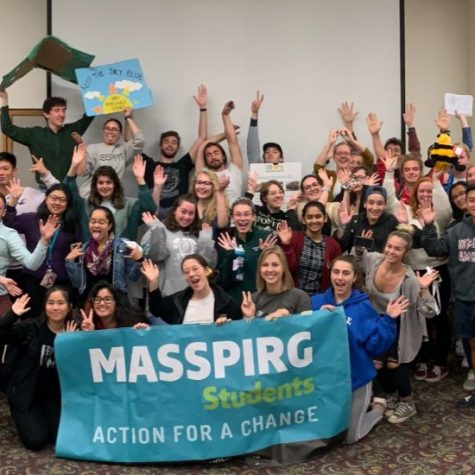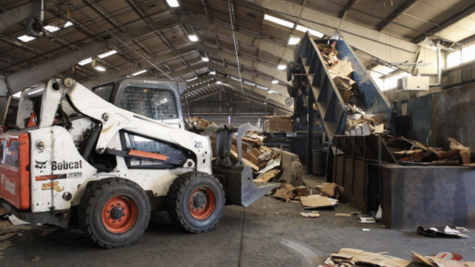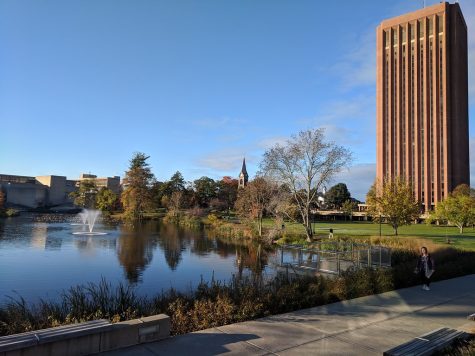“Massachusetts 2050: A Warming State” Temperature changes in Massachusetts will affect the distribution and population of different insect species
Here are two losers and four winners
(Tom’s photo gallery / Flickr)
Editor’s Note: Amherst Wire is launching a new series, “Massachusetts 2050: A Warming State” to investigate the effects of climate change in our communities and how our state is responding to its imminent impact. The series is targeted to ask specific, in-depth questions on what climate change looks like now and will look like in the future, and the hope there is if a change is instilled amongst the public. This series began production a little over a year ago but was interrupted due to the COVID-19 pandemic and due to this, it contains initial contributions from some of the Amherst Wire alumni.
AMHERST﹣The summer is a period of the year that I, like many people, look forward to. However, one negative aspect of these warmer months is the attraction of many insects. One type of insect in particular that I run into often is stink bugs. I remember multiple occasions where I’ve walked into my living room and seen several of them on window frames, the walls and even crawling across my TV screen.
This got me thinking. I have seen stink bugs before, but never in this capacity. What brought them here? Are there other insects in the area with changed populations as well?
Climate change has been a concern for hundreds of years. Our planet’s sustainability is declining at a faster rate than ever which leaves very little time to fix the problem. For example in New England, it is evident that there have been shifting temperatures and fluctuating populations of certain species. According to the United States Department of Agriculture, New England winters will shorten and become milder and snowfall is said to decrease as rain precipitation increases.
One aspect of this changing climate is that of insect populations. In Massachusetts, two species that are facing a rapid decline are honey bees and monarch butterflies. However, there are several species that have seen increases in their populations such as southern pine beetles, deer ticks, cockroaches and mosquitoes.
Let’s explore the native population losers and winners.
The Losers
Honey Bees
One main concern that has been gaining traction in the minds of the public for years, is the endangerment of honey bees. Even though scientists have been monitoring population declines in honey bees since the late ’90s, according to the United States Environmental Protection Agency, the Colony Collapse Disorder hit in 2006 when many beekeepers across the country began to report high losses of up to 90% of their hives.
Honey bees are crucial to the environment in ways unknown to many. To help preserve their existence, we first have to understand what these bees do for us.
“Honey bees are generalists, they will pollinate a wide variety of plants; both plants that provide for humans and for wildlife,” says Dan Conlon, owner of Warm Colors Apiary and President of the Russian Honey Bee Breeders Association. “If you look at the history of the planet, you realize that if you go back to the age of the dinosaurs, there’s probably about 25,000 species of plants and today we’ve got about 390,000 species,” added Conlon.
This increase in plant species is due to pollination which allows the hybridization of different species. According to Biology Reference, hybridization is the process of interbreeding between individuals of different species.
Honey bees pollinate many types of plants, such as the crops we use to feed our diet and forage that provides food for wildlife. Conlon mentioned that foods such as apples and almonds have a high dependency on bee pollination.
Most of the food in the dining halls at the University of Massachusetts comes from local farms that are supported by Conlon’s bees. According to the Food and Agriculture Organization of the United Nations, pollinators affect 35% of global agricultural land, supporting the production of 87% of the leading food crops worldwide.
When asked what would happen if there were no pollinators, Conlon replied, “what you have there is cascading extinction: a pollinator that takes care of certain fertilization of plants disappears, then the fertilization of that plant doesn’t happen and the plant does not reproduce, which results in shrinking populations of those plant species.”
A prime example of this growing issue is that of the Pink Lady’s Slipper orchid. Conlon noted its dependence on one of the 20 types of bumblebees that are dying out. Since the orchid is no longer getting regular pollination, there are fewer of them. This is happening with many other species. Aside from the survival of crops, honey bees play an important role in the food web. They are known as a keystone species.
“Honey bees do so much to provide food for birds, other animals and insects,” said Conlon.
If the honey bee population continues to decrease in certain areas or starts to lessen in areas that never had a problem before, then many animals will run out of food sources and begin to die out as well. As one species begins to decrease, the species that relies on that animal for energy will start to decline and so on.
How honey bees can decrease in population size
There are many factors that are causing the decrease of the honey bee population. Temperature is a crucial factor when examining its effects.
According to Conlon, honey bees tend to thrive in about 70 to 80 degree weather with dry air, just like humans do.
“During winter, the bees are active and stay in hives. They form a bee cluster and hold heat within as they flex their wing muscles and generate heat all winter, using honey as carbs for energy. That’s what they store honey for,” said Conlon.
When it gets too hot, the bees in the area die out and can no longer pollinate in such regions. In the mid-western sections of the country, there is vast farmland. The more farmland being used, the more herbicides. This means that weeds are being killed, which is the main food source for honey bees.
However, even though some parts of the country hold declining rates, Massachusetts is doing rather well. The Pioneer Valley in particular holds lush forage and has had good temperature months that have allowed the honey bee populations to even increase this past season.
“All the plants started blooming from about May and they never stopped until late August, which doesn’t normally happen. We had one of the best honey production years because of the concentrated bloom, and instead of having 20,000 bees, we had about 50,000,” said Conlon. “You can’t generalize the climate issue across the whole country,” he added.
He mentioned that even though the warmer temperatures shifted blooming months in a positive way, this could negatively disrupt bee populations in the future if the temperatures get too hot for them to function properly.
Aside from temperatures and chemicals, the main predator of honey bees are varroa mites. To combat this issue, the bee lab working in a company with Conlon’s association has developed new ways to breed honey bees in order to obtain better characteristics.
Conlon and many other beekeepers are trying to help preserve the genetic diversity of their bees and use as few chemicals as possible in order to reduce harm.
Conlon explained that he is hopeful for the future of honey bees because of all the young scientists working to create new ways to aid their populations and the new influx of prospective beekeepers.
“It’s the first time in seven or eight years that the bee lab was fully staffed with scientists and technicians. What’s really important is all the young scientists that are working, and the public gave us more hope because they put pressure on politicians to keep funding the research we need,” he added.
Monarch Butterflies
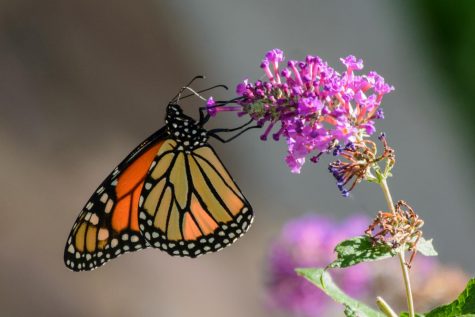
Monarch butterflies are integral to our ecosystem. They provide food to animals like birds and other insects. They also pollinate many plants to help the environment thrive.
Aside from declining food sources, fluctuating temperatures have caused monarchs to offset their reproductive, hibernation and migration patterns. The increase in intense weather like torrential rain and droughts have also caused these butterflies to die out faster.
According to the World Wildlife Fund, these butterflies rely heavily on milkweed plants as their main energy source. Unfortunately, this plant is rapidly declining due to heavy herbicide use and increased mowing in roadside ditches, according to the United States Fish and Wildlife Service, which leaves these butterflies with a lack of proper nutrition.
The number of eastern monarchs overwintering in Mexico this year has dropped 15% since last year, for a total decline of more than 90% over the past 20 years, according to the National Wildlife Federation.
To help preserve the monarch populations, there needs to be more land dedicated to them and other pollinators that have abundant nectar sources and plenty of milkweed. Land conservation is key when allowing these species to thrive.
The Winners
Southern Pine Beetles
The southern pine beetles thrive in warmer climates and are extremely destructive to pine trees. Since the cold temperature drops of winter are less frequent today than they were ten years ago, these beetles are now living longer and thriving in northern parts of the country. According to Inside Climate News, the insects’ range could reach Nova Scotia by 2020 and cover more than 270,000 square miles of forest from the upper Midwest to Maine and into Canada by 2080.
These beetles destroy pine trees in forests that house many endangered species and provide shelter and coolness for the ecosystem. Inside Climate News also stated that “the level of heat-trapping pollution will still raise temperatures enough to continue to drive the spread of the beetles at least through 2050.”
These tree-killing beetles can cause wildfires as well due to the mass amounts of dead trees they leave behind. Overall, because northern temperatures have risen over the past few decades, these beetles have begun to thrive in these new forests and will continue to adapt unless heavy measures are put in place to cool these regions down.
Deer Ticks
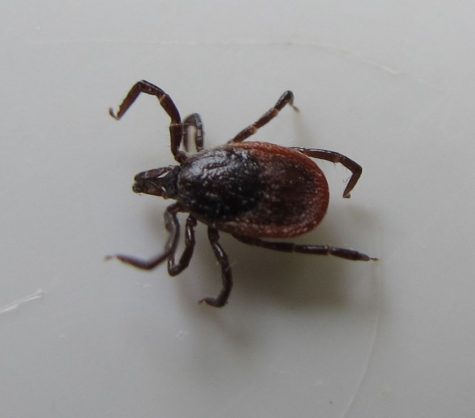
Although there is no direct link between deer tick population sizes and weather changes, their link appears when we look at deer and other mammal populations. According to an interview by the Washington Post with Matthias Leu, an ecologist and assistant professor at the College of William & Mary, urbanization has led to a growing population of deer and mice, which are used by the ticks for blood meals, and that in turn increases the tick population.
The deer are forced into our neighborhoods since they have less forest to survive in and will use the plants and greenery around our houses for feeding. This closeness to the deer allows the ticks to latch onto us.
Despite the weather not directly affecting deer tick populations, the diseases that can arise from a bite will spread faster with increased temperatures. According to the interview, one disease in particular known as Ehrlichiosis is impacted by the weather. It latches onto a certain bacteria that fawns carry more of. These fawns are weaker during the winter and die out, which lessens the spread of the disease. However, with winters getting warmer in the area, this disease will spread faster than ever.
One way to decrease the amount of deer tick exposure would be to exercise less urbanization so the deers can stay in the forests at a distance. Although plausible, this would be difficult considering urbanization is at a growing rate.
House Pests
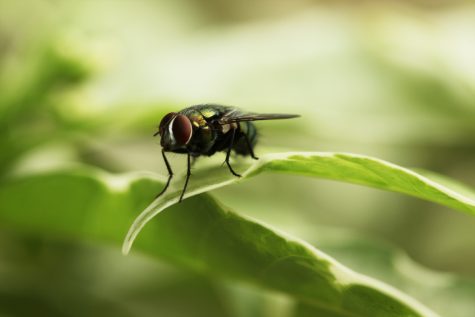
According to an article by BBC News, fast-breeding insects that have adapted to human living will thrive. Pests like cockroaches and common house flies breed extremely fast and can easily adapt to new changes.
Many of these insects have learned to protect themselves against pesticides and other factors used to kill them.
Some of their predators include rats, mice and birds. These animals will face population declines due to their other food sources dying out, which leaves these house pests more time to breed and thrive.
Mosquitoes
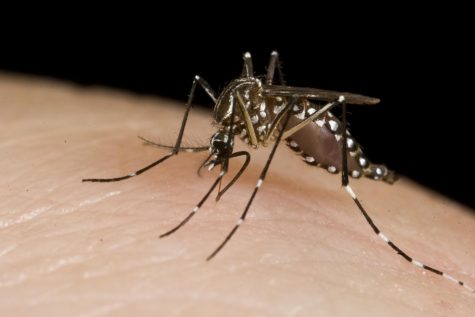
Massachusetts is facing a warmer climate, which not only allows the preexisting mosquitoes to breed more abundantly, but it also offers up a new habitat for certain types of mosquitoes that could not survive here before.
According to an article by the Daily Hampshire Gazette, the Asian tiger mosquito has just recently moved more north from New Jersey to Massachusetts. This particular mosquito is not necessarily a disease threat but it is a nuisance as it is active during the day as well as dusk.
Massachusetts recently faced a large outbreak of the eastern equine encephalitis virus, also known as EEE. This is likely due to the large amounts of rainfall and warmer temperatures that allowed the mosquitoes to rapidly breed.
We could be facing even larger outbreaks in the next few years if the temperatures continue to rise and winters become milder.
Email Bella at [email protected]




